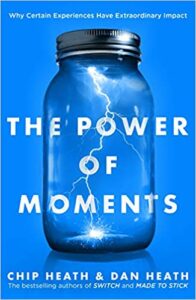Triggering Trivia in Business Blogs

Modern technology has made it possible to find and share fascinating information, explains Alex Palmer in the delightful little book Alternative Facts. Of the 200 entries in the collection, about one-third are “true-ish” rather than true, and readers are invited to guess which those are, with answers found at the back of the book.
Trivia in general, I’ve long maintained, represent useful tools for blog content writers. In addition to adding some fun to the discussion of a topic, trivia can be used in business blogs in at least four different ways:
1. defining basic terminology
2. sparking curiosity about the subject
3. putting modern-day practices and beliefs into historical perspective
4. explaining why the business owner/practitioner chooses to operate in a certain way
Of course, stocking up on ideas for future blog posts isn’t all about trivia, as I explain to newbie blog content writers. The trivia tidbit is just the jump-off point for the message.
Here are eight facts, culled from Palmer’s book, that illustrate the value of “triggering” the discussion of a subject using a piece of trivia and relating it to the sponsor of the blog:
Who might use each of these tidbits in their blog?
1. Chewing your food longer can help you lose weight.
(weight loss advisor, spa, health provider, health food store) ,:
2. Of all creatures, moths have the strongest sense of hearing.
(audiologist, hearing aid company)
3. Americans are the only people who label pencils No. 2.
(private school, tutoring center, office supply store)
4. Warner Music Group owns the rights to the lyrics of “Happy Birthday”, and earns royalties on every use of the song on film, on TV, or in a public performance.
(patent attorney, birthday party organizer, party favor store, child care center)
5. William Shakespeare wore one gold earring.
(jeweler, fashion advisor, salon)
6. The bathroom scene in Alfred Hitchcock’s “Psycho” was the first time a toilet was flushed on screen.
(plumbing supply store, plumber, home builder, realtor)
7. The oldest preserved human body in the world was covered in tattoos.
(tattoo parlor, salon, spa)
8. Being double-jointed is something a person is born with.
(dance studio, exercise coach, dance equipment or exercise equipment provider)
For blog content writers, adding fun and interest to blog posts might be a “trivial” matter!





Follow us online!